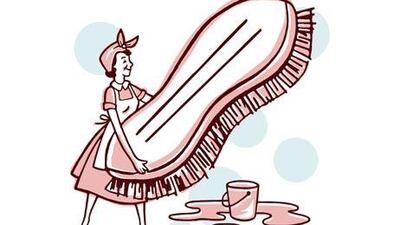Its chemical formula is NaHCO3. Chemists call it sodium bicarbonate. The British call it bicarbonate of soda, or bicarb for short. Americans call it baking soda. But whatever you call it, this wonderful white powder is one of the best and safest substances you can use around the home. It is cheap, non-toxic and is efficiently broken down in the environment. It is a cleaner, a grease absorber and a deodoriser.
Here are some of the many ways it can be used. To clean kitchen surfaces, sprinkle over and clean with a damp cloth. Stains such as fruit juice or tea can be removed by making a paste of bicarb and water and rubbing the stain until it disappears. To clean and remove odours such as garlic and onion from wooden chopping boards, sprinkle bicarb on to a damp cloth and clean thoroughly. Alternatively, sprinkle the board with bicarb and spray with vinegar. The mixture will fizz. Let the bubbles subside, then scrub the board. Rinse and dry.
Sprinkle neat bicarb in stainless steel sinks, then rub with a damp cloth. Its slight abrasiveness will clean without scratching. To remove burnt bits from saucepans, fill with 5cm water and bring to the boil. Add 1 teacup of bicarb and leave the pan overnight. The next day, the burnt bits should have lifted. If white enamel saucepans have stained, boil a generous amount of water and bicarb in them for 10 minutes.
Remove odours and stains from non-stick pans by adding 2-3 tbsp bicarb to 1cm or so of water. Bring to the boil and simmer until the stains have disappeared (be careful not to let it boil dry). Clean copper pans by sprinkling half a lemon with bicarb and using it to scrub the metal. Clean the interior of the fridge with warm water and bicarb (1 tbsp to 1 litre of water). Because it is odourless, it will not the taint the inside of the fridge as household cleaners can. Rub stubborn marks with neat bicarb sprinkled on a damp cloth.
A traditional environmentally friendly way to keep the oven clean is to make a solution of bicarb and water (half tbsp to 500ml water). Swab this mixture over the interior of a clean oven and the shelves (avoiding easy-clean panels). It will dry to a white-streaked, powdery finish. The next time the oven is used, any grease will be absorbed and will wipe off easily. The Housewife's Handbook by Rachel Simhon (Bloomsbury) is available on www.amazon.com

